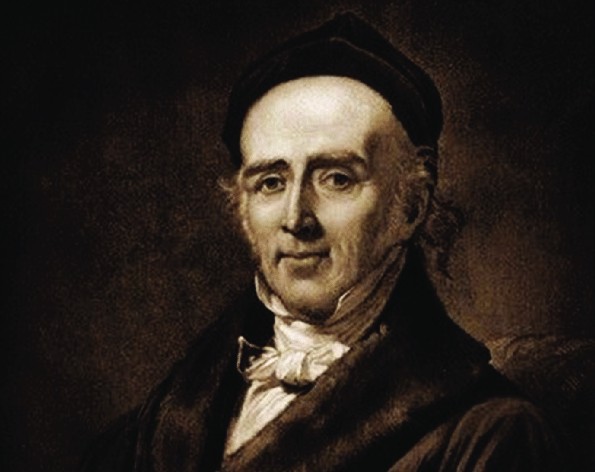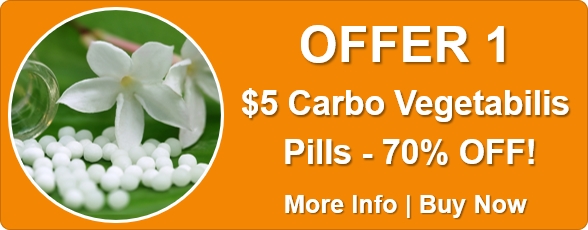The Organon – Aphorism 271-280

§ 271 Fifth Edition
All other substances adapted for medicinal use – except sulphur, which has of late years been only employed in the form of a highly diluted (X) tincture – as pure or oxidized and sulphuretted metals and other minerals, petroleum, phosphorus, as also parts and juices of plants that can only be obtained in the dry state, animal substances, neutral salts, etc., all these are first to be potentized by trituration for three hours, up to the millionfold pulverulent attenuation, and of this one grain is to be dissolved, and brought to the thirtieth development of power through twenty-seven attenuating phials, in the same manner as the vegetable juices.1
1 As is still more circumstantially described in the prefaces to Arsenic and Pulsatilla in the Materia Medica Pura.
§ 271 Sixth Edition
If the physician prepares his homoeopathic medicines himself, as he should reasonably do in order to save men from sickness,1 he may use the fresh plant itself, as but little of the crude article is required, if he does not need the expressed juice perhaps for purposes of healing. He takes a few grains in a mortar and with 100 grains sugar of milk three distinct times brings them to the one-millionth trituration (§ 270) before further potentizing of a small portion of this by means of shaking is undertaken, a procedure to be observed also with the rest of crude drugs of either dry or oily nature.
1 Until the State, in the future, after having attained insight into the indispensability of perfectly prepared homoeopathic medicines, will have them manufactured by a competent impartial person, in order to give them free of charge to homoeopathic physicians trained in homoeopathic hospitals, who have been examined theoretically and practically, and thus legally qualified. The physician may then become convinced of these divine tools for purposes of healing, but also to give them free of charge to his patients – rich and poor.
§ 272 Fifth Edition
In no case is it requisite to administer more than one single, simple medicinal substance at one time.1
1 Some homoeopathists have made the experiment, in cases where they deemed one remedy homoeopathically suitable for one portion of the symptoms of a case of disease, and a second for another portion, of administering both remedies at the same time; but I earnestly deprecate such a hazardous experiment, which can never be necessary, though it may sometimes seem to be of use.
§ 272 Sixth Edition
Such a globule,1 placed dry upon the tongue, is one of the smallest doses for a moderate recent case of illness. Here but few nerves are touched by the medicine. A similar globule, crushed with some sugar of milk and dissolved in a good deal of water (§ 247) and stirred well before every administration will produce a far more powerful medicine for the use of several days. Every dose, no matter how minute, touches, on the contrary, many nerves.
1 These globules (§ 270) retain their medicinal virtue for many years, if protected against sunlight and heat.
§ 273 Fifth Edition
It is not conceivable how the slightest dubiety could exist as to whether it was more consistent with nature and more rational to prescribe a single well-known medicine at one time in a disease, or a mixture of several differently acting drugs.
§ 273 Sixth Edition
In no case under treatment is it necessary and therefore not permissible to administer to a patient more than one single, simple medicinal substance at one time. It is inconceivable how the slightest doubt could exist as to whether it was more consistent with nature and more rational to prescribe a single, simple1 medicine at one time in a disease or a mixture of several differently acting drugs. It is absolutely not allowed in homoeopathy, the one true, simple and natural art of healing, to give the patient at one time two different medicinal substance.
1 Two substances, opposite to each other, united into neutral Natrum and middle salts by chemical affinity in unchangeable proportions, as well as sulphurated metals found in the earth and those produced by technical art in constant combining proportions of sulphur and alkaline salts and earths, for instance (natrum sulph. and calcarea sulph.) as well as those ethers produced by distillation of alcohol and acids may together with phosphorus be considered as simple medicinal substances by the homoeopathic physician and used for patients. On the other hand, those extracts obtained by means of acids of the so-called alkaloids of plants, are exposed to great variety in their preparation (for instance, chinin, strychnine, morphine), and can, therefore, not be accepted by the homoeopathic physician as simple medicines, always the same, especially as he possesses, in the plants themselves, in their natural state (Peruvian bark, nux vomica, opium) every quality necessary for healing. Moreover, the alkaloids are not the only constituents of the plants.
§ 274
As the true physician finds in simple medicines, administered singly and uncombined, all that he can possibly desire (artificial disease-force which are able by homoeopathic power completely to overpower, extinguish, and permanently cure natural diseases), he will, mindful of the wise maxim that “it is wrong to attempt to employ complex means when simple means suffice,” never think of giving as a remedy any but a single, simple medicinal substance; for these reasons also, because even though the simple medicines were thoroughly proved with respect to their pure peculiar effects on the unimpaired healthy state of man, it is yet impossible to foresee how two and more medicinal substances might, when compounded, hinder and alter each other’s actions on the human body; and because, on the other hand, a simple medicinal substance when used in diseases, the totality of whose symptoms is accurately known, renders efficient aid by itself alone, if it be homoeopathically selected; and supposing the worst case to happen, that it was not chosen in strict conformity to similarity of symptoms, and therefore does no good, it is yet so far useful that it promoted our knowledge of therapeutic agents, because, by the new symptoms excited by it in such a case, those symptoms which this medicinal substance had already shown in experiments on the healthy human body are confirmed, an advantage that is lost by the employment of all compound remedies.1
1 When the rational physician has chosen the perfectly homoeopathic medicine for the well-considered case of disease and administered it internally, he will leave to irrational allopathic routine the practice of giving drinks or fomentations of different plants, of injecting medicated glysters and of rubbing in this or the other ointment.
§ 275
The suitableness of a medicine for any given case of disease does not depend on its accurate homoeopathic selection alone, but likewise on the proper size, or rather smallness, of the dose. If we give too strong a dose of a medicine which may have been even quite homoeopathically chosen for the morbid state before us, it must, notwithstanding the inherent beneficial character of its nature, prove injurious by its mere magnitude, and by the unnecessary, too strong impression which, by virtue of its homoeopathic similarity of action, it makes upon the vital force which it attacks and, through the vital force, upon those parts of the organism which are the most sensitive, and are already most affected by the natural disease.
§ 276 Fifth Edition
For this reason, a medicine, even though it may be homoeopathically suited to the case of disease, does harm in every dose that is too large, the more harm the larger the dose, and by the magnitude of the dose it does more harm the greater its homoeopathicity and the higher the potency1 selected, and it does much more injury than any equally large dose of a medicine that is unhomoeopathic, and in no respect adapted (allopathic) to the morbid state; for in the former case the so-called homoeopathic aggravation (§§157-160) – that is to say, the very analogous medicinal disease produced by the vital force stirred up by the excessively large dose of medicine, in the parts of the organism that are most suffering and most irritated by the original disease – which medicinal disease, had it been of appropriate intensity, would have gently effected a cure – rises to an injurious height;2 the patient, to be sure, no longer suffers from the original disease, for that has been homoeopathically eradicated, but he suffers all the more from the excessive medicinal disease and from useless exhaustion of his strength.
1 The praise bestowed of late years by some few homoeopathists on the larger doses is owing to this, either that they chose low dynamizations of the medicines to be administered, as I myself used to do twenty years ago, from not knowing any better, or that the medicines selected were not perfectly homoeopathic.
2 See note to §246
§ 276 Sixth Edition
For this reason, a medicine, even though it may be homoeopathically suited to the case of disease, does harm in every dose that is too large, the more harm the larger the dose, and by the magnitude of the dose and in strong doses’ it does more harm the greater its homoeopathicity and the higher the potency1 selected, and it does much more injury than any equally large dose of a medicine that is unhomoeopathic, and in no respect adapted to the morbid state (allopathic).
Too large doses of an accurately chosen homoeopathic medicine, and especially when frequently repeated, bring about much trouble as a rule. They put the patient not seldom in danger of life or make this disease almost incurable. They do indeed extinguish the natural disease so far as the sensation of the life principle is concerned and the patient no longer suffers from the original disease from the moment the too strong dose of the homoeopathic medicine acted upon him but he is in consequence more ill with the similar but more violent medicinal disease which is most difficult to destroy.2
1 The praise bestowed of late years by some homoeopathists on the larger doses is owing to this, either that they chose low dynamizations of the medicine to be administered (as I myself used to do twenty years ago, from nor knowing any better), or that the medicines selected were not homoeopathic and imperfectly prepared by their manufacturers.
2 Thus, the continuous use of aggressive allopathic large doses of mercurials against syphilis develops almost incurable maladies, when yet one or several doses of a mild but active mercurial preparation would certainly have radically cured in a few days the whole venereal disease, together with the chancre, provided it had not been destroyed by external measures (as is always done by allopathy). In the same way, the allopath gives Peruvian bark and quinine in intermittent fever daily in very large doses, where they are correctly indicated and where one very small dose of a highly potentized China would unfailingly help (in marsh intermittents and even in persons who were not affected by any evident psoric disease). A chronic China malady (coupled at the same time with the development of psora) is produced, which, if it dose not gradually kill the patient by damaging the internal important vital organs, especially spleen and liver, will put him, nevertheless suffering for years in a sad state of health. A homoeopathic antidote for such a misfortune produced by abuse of large doses of homoeopathic remedies is hardly conceivable.
§ 277
For the same reason, and because a medicine, provided the dose of it was sufficiently small, is all the more salutary and almost marvellously efficacious the more accurately homoeopathic its selection has been, a medicine whose selection has been accurately homoeopathic must be all the more salutary the more its dose is reduced to the degree of minuteness appropriate for a gentle remedial effect.
§ 278 Fifth Edition
Here the question arises, what is this most suitable degree of minuteness for sure and gentle remedial effect; how small, in other words, must be the dose of each individual medicine, homoeopathically selected for a case of disease, to effect the best cure? To solve this problem, and to determine for every particular medicine, what dose of it will suffice for homoeopathic therapeutic purposes and yet be so minute that the gentlest and most rapid cure may be thereby obtained – to solve this problem is, as may easily be conceived, not the work off theoretical speculation; not by fine-spun reasoning, not by specious sophistry can we expect to obtain the solution of this problem. Pure experiment, careful observation, and accurate experience can alone determine this; and it were absurd to adduce the large doses of unsuitable (allopathic) medicines of the old system, which do not touch the diseased side of the organism homoeopathically, but only attack the parts unaffected by the disease, in opposition to what pure experience pronounces respecting the smallness of the doses required for homoeopathic cures.
§ 278 Sixth Edition
Here the question arises, what is this most suitable degree of minuteness for sure and gentle remedial effect; how small, in other words, must be the dose of each individual medicine, homoeopathically selected for a case of disease, to effect the best cure? To solve this problem, and to determine for every particular medicine, what dose of it will suffice for homoeopathic therapeutic purposes and yet be so minute that the gentlest and most rapid cure may be thereby obtained – to solve this problem is, as may easily be conceived, not the work off theoretical speculation; not by fine-spun reasoning, not by specious sophistry can we expect to obtain the solution of this problem. It is just as impossible as to tabulate in advance all imaginable cases. Pure experiment, careful observation of the sensitiveness of each patient, and accurate experience can alone determine this; and it were absurd to adduce the large doses of unsuitable (allopathic) medicines of the old system, which do not touch the diseased side of the organism homoeopathically, but only attack the parts unaffected by the disease, in opposition to what pure experience pronounces respecting the smallness of the doses required for homoeopathic cures.
§ 279 Fifth Edition
This pure experience shows UNIVERSALLY, that if the disease do not manifestly depend on a considerable deterioration of an important viscus (even though it belong to the chronic and complicated diseases), and if during the treatment all other alien medicinal influences are kept away from the patients, the dose of the homoeopathically selected remedy can never be prepared so small that it shall not be stronger than the natural disease, and shall not be able to overpower, extinguish and cure it, at least in part as long as it is capable of causing some, though but a slight preponderance of its own symptoms over those of the disease resembling it (slight homoeopathic aggravation, (§§ 157-160) immediately after its ingestion.
§ 279 Sixth Edition
This pure experience shows UNIVERSALLY, that if the disease do not manifestly depend on a considerable deterioration of an important viscus (even though it belong to the chronic and complicated diseases), and if during the treatment all other alien medicinal influences are kept away from the patients, the dose of the homoeopathically selected and highly potentized remedy for the beginning of treatment of an important, especially chronic disease can never be prepared so small that it shall not be stronger than the natural disease and shall not be able to overpower it, at least in part and extinguish it from the sensation of the principle of life and thus make a beginning of a cure.
§ 280 Fifth Edition
This incontrovertible axiom of experience is the standard of measurement by which the doses of all homoeopathic medicines, without exception, are to be reduced to such an extent that after their ingestion, they shall excite a scarcely observable homoeopathic aggravation, let the diminution of the dose go ever so far, and appear ever so incredible to the materialistic ideas of ordinary physicians;1 their idle declamations must before the verdict of unerring experience.
1 Let them learn from the mathematicians how true it is that a substance divided into ever so many parts must still contain in its smallest conceivable parts always some of this substance, and that the smallest conceivable part does not cease to be some of this substance and cannot possibly become nothing; – let them, if they are capable of being taught, hear from natural philosophers that there are enormously, powerful things (forces) which are perfectly destitute of weight, as, for example, caloric, light, etc., consequently infinitely lighter than the medicine contained in the smallest doses used in homoeopathy; – let them, if they can, weigh the irritating words that bring on a bilious fever, or the mournful intelligence respecting her only son that kills the mother; let them touch, for a quarter of an hour, a magnet capable of lifting a hundred pounds weight, and learn from the pain it excites that even imponderable agencies can produce the most violent medicinal effects upon man; – and let the weak ones among them allow the pit of the stomach to be slightly touched by the thumb’s point of a strong-willed mesmeriser for a few minutes, and the disagreeable sensations they then suffer will make them repent of attempting to set limits to the boundless activity of nature; the weak-minded creatures!
If the allopathist who is trying the homoeopathic system imagine he cannot bring himself to give such small and profoundly attenuated doses, let him only ask himself what risk he runs by so doing? If the scepticism which holds what is ponderable only to be real, and all that is imponderable to be nothing, be right, nothing worse could result from a dose that appears to him to be nothing, than that no effect would ensue – and consequently this would be always much more innocuous than what must result from his too large doses of allopathic medicine. Why will he consider his inexperience, coupled with prejudice, more reliable than an experience of many years corroboration by facts? And, moreover, the homoeopathic medicine becomes potentized at every division and diminution by trituration or succussion! – a development of the inherent powers of medicinal substances which was never dreamed of before my time, and which is of so powerful a character that of late I have been compelled by convincing experience to reduce the ten succussions formerly directed to be given after each attenuation, to two.
§ 280 Sixth Edition
The dose of the medicine that continues serviceable without producing new troublesome symptoms is to be continued while gradually ascending, so long as the patient with general improvement, begins to feel in a mild degree the return of one or several old original complaints. This indicates an approaching cure through a gradual ascending of the moderate doses modified each time by succussion (§ 247). It indicates that the vital principal no longer needs to be affected by the similar medicinal disease in order to lose the sensation of the natural disease (§ 148). It indicates that the life principle now free from the natural disease begins to suffer only something of the medicinal disease hitherto known as homoeopathic aggravation.







